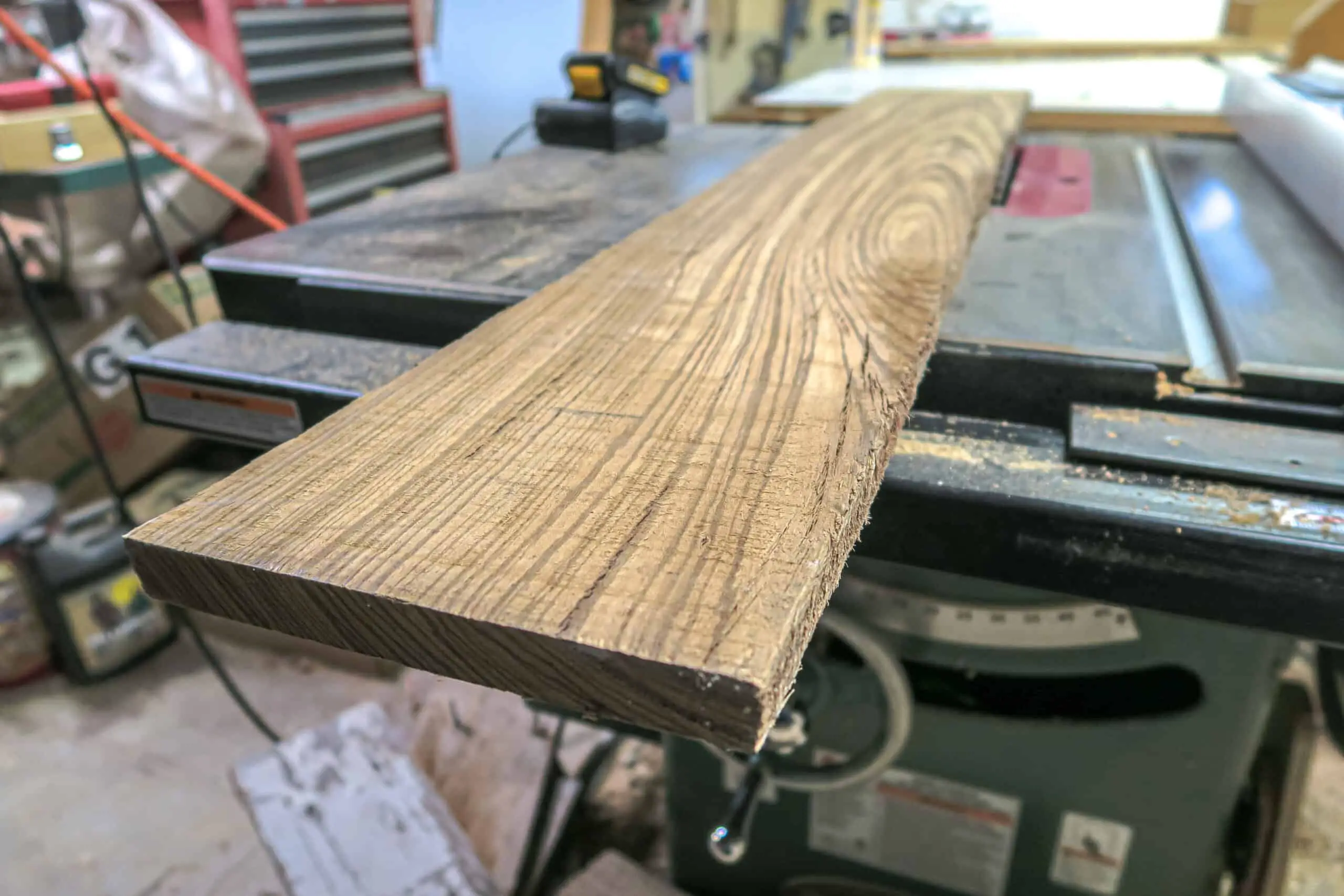Zebrawood, also known as zebrano or zingana, is a distinctive type of hardwood that is highly valued for its unique appearance. The wood is characterized by its prominent dark brown stripes that resemble the stripes of a zebra, hence the name.
Zebrawood is best used for decorative applications due to its striking appearance and unique grain pattern, characterized by dark brown stripes resembling those of a zebra. It is commonly employed in high-end furniture, flooring, paneling, and veneers, as well as in the construction of musical instruments, adding an element of elegance and visual interest to these items.
Given that it is native to countries such as Cameroon, Gabon, and the Republic of Congo, zebrawood isn’t necessarily as well known as other woods outside Africa. Zebrawood can also be found in other countries within the region, including Nigeria and Equatorial Guinea.
Let’s discuss zebrawood in more detail and delve into its various uses.
Common Uses For Zebrawood
Zebrawood is primarily used in decorative applications due to its striking grain pattern. Here are some common uses of zebrawood:
- Furniture: Zebrawood is often used to make high-end furniture pieces, such as cabinets, tables, chairs, and veneers. Its eye-catching appearance can add a touch of elegance and visual interest to any room.
- Flooring: Zebrawood flooring is popular in both residential and commercial settings. The distinct striping creates a bold statement and can become a focal point in interior design.
- Paneling and veneers: Zebrawood is commonly used as a veneer for wall paneling, doors, and decorative accents. It can be applied to various surfaces to enhance their aesthetic appeal.
- Musical instruments: Zebrawood is favored by instrument makers for its tonal qualities and striking appearance. It is used in the construction of guitars, basses, drums, and other musical instruments.
- Crafts and small woodworking projects: Due to its unique grain pattern, zebrawood is sought after by woodworkers and artisans for crafting smaller items like jewelry boxes, cutting boards, pens, and other decorative objects.
It’s worth noting that zebrawood is a tropical hardwood and, like other exotic woods, it may be subject to regulations or restrictions regarding its sourcing and trade. It’s important to ensure that zebrawood used in products is obtained from sustainable and legal sources.
Zebrawood Compared To Other Popular Exotic Hardwoods
Zebrawood is an exotic hardwood but there are others you are probably familiar with, too.
Here’s a table comparing zebrawood to other popular exotic woods in terms of their suitability for various commercial uses:
| Wood Species | Zebrawood | Teak | Mahogany | Ebony |
|---|---|---|---|---|
| Appearance | Dark brown stripes | Golden to dark brown | Reddish-brown to pink | Jet black |
| Durability | Moderately durable | Highly durable | Moderately durable | Highly durable |
| Workability | Easy to work with | Easy to work with | Easy to work with | Difficult to work with |
| Stability | Moderately stable | Highly stable | Moderately stable | Highly stable |
| Common Uses | Furniture, flooring, paneling, musical instruments | Furniture, boatbuilding, decking, outdoor applications | Furniture, cabinetry, veneers, boatbuilding | Musical instruments, fine woodworking, luxury items |
| Sustainability | Varies; check sourcing | Varies; check sourcing | Varies; check sourcing | Varies; check sourcing |
| Price Range | Moderate | High | Moderate to high | High |
Please note that the information provided in the table is a general comparison, and the characteristics and suitability of different woods can vary based on specific factors such as species, quality, and region. It is always recommended to consult with experts and consider individual project requirements when selecting the most suitable wood for commercial uses.
Zebrawood Characteristics Summarized
Here’s a table describing various aspects and characteristics of zebrawood:
| Aspect/Characteristic | Description |
|---|---|
| Scientific Name | Microberlinia brazzavillensis or Microberlinia bisulcata |
| Other Names | Zebrano, Zingana |
| Origin | West Africa (Cameroon, Gabon, Republic of Congo) |
| Appearance | Distinctive dark brown stripes resembling those of a zebra |
| Texture | Medium to coarse texture |
| Grain Pattern | Interlocked grain with wavy or zigzag patterns |
| Durability | Moderately durable |
| Hardness | Hardwood; Janka hardness rating of approximately 1575 lb-f (pounds of force) |
| Workability | Generally easy to work with both hand and machine tools |
| Stability | Moderately stable, but can have some movement due to changes in humidity |
| Finishing | Takes finishes well, allowing for various staining and polishing options |
| Common Uses | Furniture, flooring, paneling, veneers, musical instruments, crafts, small woodworking projects |
| Sustainability | It is important to ensure zebrawood is sourced from sustainable and legal sources |
Please note that the characteristics of zebrawood can vary slightly depending on the specific species and growing conditions.
Want to learn more about zebrawood? We asked the question Is Zebrawood Good For Smoking Foods and answered it in detail in case you’d like to know!

